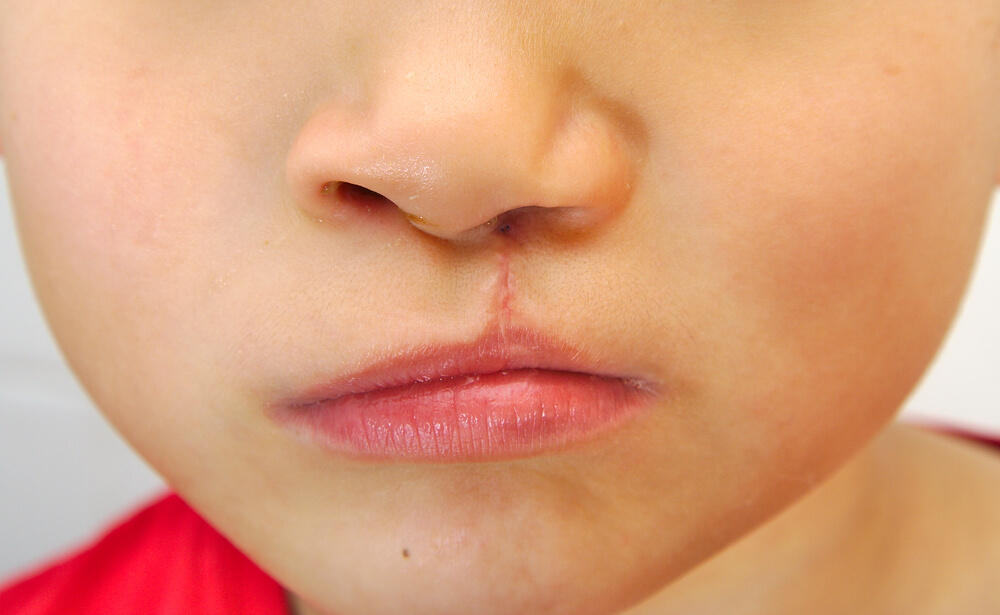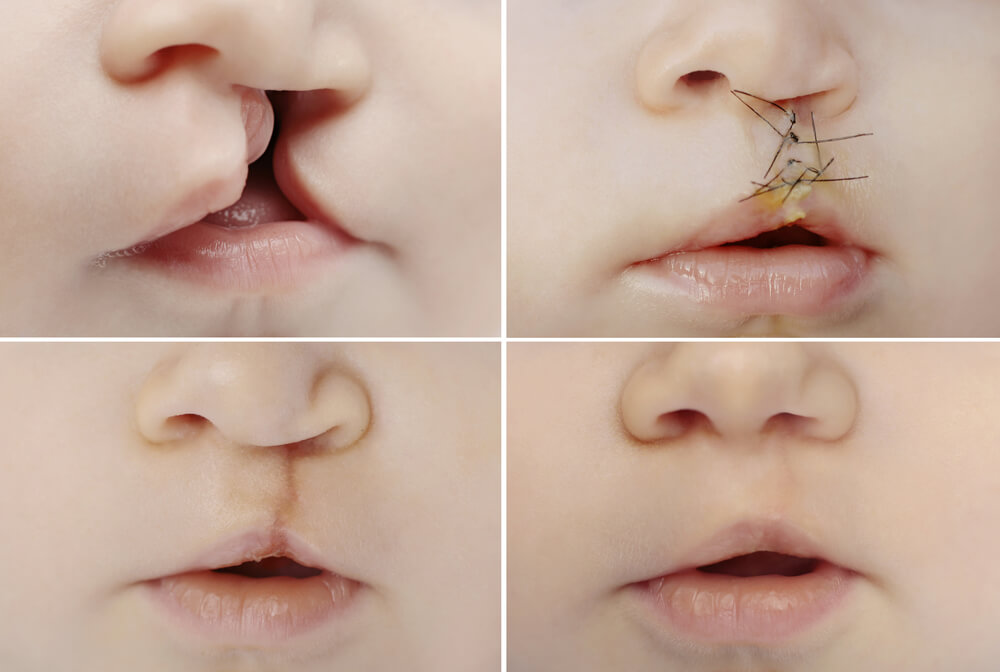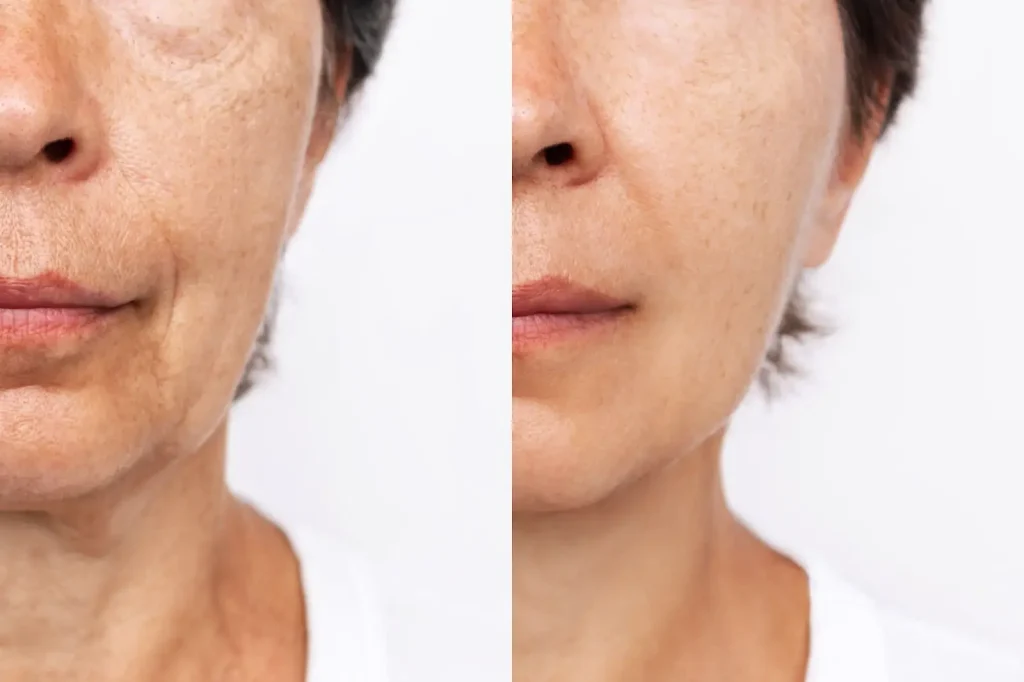Cleft palate surgery is a transformative process that addresses congenital conditions affecting the lip and/or palate. Understanding the associated costs, procedures, and recovery is crucial for individuals and families embarking on this journey.
In this guide, we will explore the key aspects of cleft palate surgery, including its causes, diagnosis, treatment options, and the financial considerations involved.
What is cleft lip and cleft palate repair surgery?
Cleft lip and palate repair surgery aims to correct congenital conditions that result in a gap or opening in the upper lip and/or roof of the mouth. This transformative procedure enhances aesthetics and restores essential functions like speech and eating.
What causes a cleft lip and/or cleft palate?
Cleft lip and palate conditions result from a combination of genetic and environmental factors during fetal development. Genetic predisposition, maternal smoking, and certain medications are among the contributing factors.
Diagnosis of Cleft Lip and Cleft Palate
Diagnosing cleft lip and cleft palate is crucial in providing timely and effective interventions for affected individuals. The process typically encompasses a multifaceted approach, involving both prenatal and post-birth assessments.
1. Prenatal Ultrasounds
- Early Detection through Imaging: Prenatal ultrasounds play a pivotal role in the early detection of cleft lip and cleft palate. During routine prenatal screenings, healthcare professionals utilize advanced imaging techniques to visualize the developing fetus. Anomalies in facial structures, including the presence of a cleft lip or palate, can often be identified during these screenings.
- Genetic Counseling: In cases where a cleft lip or palate is suspected or detected prenatally, genetic counseling becomes integral. Genetic counselors work with expecting parents to explain the nature of the condition, discuss potential causes, and explore the available options for treatment and support.
2. Post-Birth Assessments
- Clinical Examination: Upon the birth of the child, a clinical examination is conducted by a healthcare professional, such as Dr. Bret Johnson–the best cleft palate surgeon in the USA. This examination involves a thorough inspection of the infant’s facial features, including the lip and palate. The visible gap or opening in the upper lip or roof of the mouth is indicative of a cleft condition.
- Specialized Diagnostic Tools: In addition to the visual examination, healthcare providers may employ specialized diagnostic tools to assess the extent and severity of the cleft. These may include imaging studies such as X-rays or more advanced imaging modalities, providing detailed insights into the structural abnormalities.
3. Early Detection for Effective Treatment Planning
- Interdisciplinary Team Involvement: Early diagnosis is paramount for the development of a comprehensive and effective treatment plan. It allows for the involvement of an interdisciplinary team comprising plastic surgeons, pediatricians, geneticists, speech therapists, and other specialists. This collaborative approach ensures a holistic assessment and tailored treatment strategy.
- Parental Education and Support: Early detection not only facilitates prompt medical interventions but also allows for proactive parental education and support. Parents can be informed about the nature of the condition, potential challenges, and available resources, empowering them to make informed decisions for the well-being of their child.
When should my child have the surgery?
The timing for cleft lip and cleft palate surgery varies, but generally, cleft lip repair is performed between 3 to 6 months of age, while minor cleft palate repair may take place between 9 to 12 months. The specific timing depends on the individual’s health, the severity of the cleft, and the recommendations of the healthcare team.
Early intervention is often crucial for optimal outcomes, and consultation with healthcare professionals will guide the decision-making process based on the unique needs of the child.
How much does cleft lip and palate surgery cost?
The cleft lip operation cost/cleft lip surgery cost varies based on factors such as the severity of the condition, geographic location, and healthcare provider. Insurance coverage, grants, and financial assistance programs can help alleviate the financial burden.
What should I expect during a consultation for cleft lip and cleft palate repair?
During a consultation for cleft lip and palate repair, the plastic surgeon will thoroughly assess your child’s condition, discussing treatment options, explaining the surgical procedure and expected outcomes. Clear guidance on preoperative preparations, postoperative care, and potential risks will be provided, along with insights into how the surgery may impact speech and feeding.
The surgeon will also propose a timeline for the surgery, allowing time for questions and concerns, ensuring you are well-informed and comfortable with the treatment plan. Ask questions about the surgeon’s experience and the specifics of the procedure.
Some questions you can ask:
- How many cleft lip and palate surgeries have you performed?
- Can you share details about your experience with cases similar to my child’s?
- What specific surgical technique do you plan to use for my child’s case?
- What are the anticipated outcomes, both aesthetically and functionally?
- What potential complications might occur during or after the procedure?
- How do you handle complications, and what contingency plans are in place?
- What are the expected long-term outcomes for my child, including speech and aesthetic improvements?
- Is additional treatment or follow-up care anticipated in the future?
What are the risks of cleft lip and cleft palate repair?
Understanding the potential risks associated with cleft lip and cleft palate repair is crucial for informed decision-making.
Here is a list of common risks:
- Infection
- Bleeding
- Adverse Reactions to Anesthesia
- Scarring
- Altered Sensation
- Speech and Feeding Issues
- Palatal Fistula Formation
- Airway Complications
Treatments for Cleft Lip and Cleft Palate
The treatment journey for individuals with cleft lip and cleft palate is multifaceted, addressing both the cosmetic and functional aspects of the condition. Tailored to each individual’s unique needs, the comprehensive care typically involves a combination of surgeries, orthodontic interventions, and speech therapy.
Surgical Interventions
- Cleft Lip Repair: Surgery to correct a cleft lip usually takes place within the first few months of life. The procedure involves carefully reconstructing the lip to achieve a more normal appearance. Surgeons work to close the gap and create symmetry in the lip structure.
- Cleft Palate Repair: Repair of the cleft palate often occurs around 9 to 12 months of age. This surgical intervention involves closing the opening in the roof of the mouth, restoring the separation between the oral and nasal cavities. The goal is to improve speech development and prevent issues like nasal regurgitation during feeding.
Orthodontic Care
- Alignment of Teeth and Jaw: Orthodontic care is often a crucial component of cleft palate treatment. Braces and other orthodontic devices may be used to address issues related to dental and jaw alignment. This helps in achieving optimal functional and aesthetic outcomes.
- Bone Grafting: In cases where the cleft extends into the upper jaw, bone grafting may be necessary. This procedure involves taking bone from another part of the body (or using a synthetic material) and grafting it onto the upper jaw to support the development of permanent teeth and stabilize the jaw structure.
Speech Therapy
- Addressing Speech Challenges: Speech therapy is a vital part of comprehensive cleft palate care. Individuals with cleft conditions may face challenges in articulation, resonance, and overall speech development. Speech therapists work collaboratively with patients to improve communication skills, addressing any lingering issues after surgical interventions.
- Feeding Techniques: Cleft palate repair can impact feeding, and speech therapists often provide guidance on specialized feeding techniques to ensure proper nutrition and development.
Comprehensive Care Team
- Collaboration of Specialists: Cleft palate treatment often involves collaboration among a team of specialists at a cleft palate clinic, including plastic surgeons, orthodontists, speech therapists, pediatricians, and other healthcare professionals. This interdisciplinary approach ensures that all aspects of the individual’s care are considered and addressed.
- Long-Term Follow-Up: Treatment for cleft lip and cleft palate is not a one-time event but rather a journey that may extend into adolescence and beyond. Long-term follow-up with the care team allows for monitoring and addressing any evolving needs.
How should I prepare for my child’s cleft lip and cleft palate repair?
Preparation involves understanding preoperative instructions, ensuring a supportive environment, and arranging for necessary postoperative care.
Steps of a cleft lip and cleft palate repair procedure:
Here’s a detailed exploration of the transformative journey through the steps of cleft lip and cleft palate repair, a meticulous and essential process aimed at enhancing both form and function.
- Step 1 – Anesthesia: The patient is administered anesthesia for comfort and pain management during the surgery.
- Step 2 – The incision: The surgeon makes precise incisions to correct the cleft, ensuring a natural and symmetrical outcome.
- Step 3 – Closing the incisions: Tissues are carefully repositioned and sutured to close the gap, restoring proper form and function.
- Step 4 – See the results: Over time, observe the transformative results as the healing process unfolds.
What should I expect during my child’s cleft lip and cleft palate repair recovery?
During your child’s recovery from cleft lip and palate repair, expect close monitoring immediately after surgery, potential specialized feeding techniques during a short hospital stay, and adherence to prescribed medications and wound care at home. Follow-up appointments for check-ups and potential speech therapy initiation will be scheduled.
Long-term recovery includes orthodontic care, ongoing speech therapy, and emotional support for gradual improvement in appearance and overall well-being. Celebrate milestones such as speech development and orthodontic progress, maintaining open communication with the healthcare team throughout the journey.
Nurturing Transformative Journeys through Cleft Palate Surgery
The intricate landscape of cleft palate surgery unveils a transformative narrative—from early diagnosis to tailored treatments and surgical procedures, all working synergistically to empower individuals with enhanced functionality and renewed confidence.
Navigating this journey with the guidance of experienced professionals, such as Dr. Bret Johnson, ensures a holistic approach, underlining the profound impact of comprehensive care on the lives of those undergoing cleft lip and palate repair. Contact them today for cleft palate repair in Dallas and Plano, Texas!






